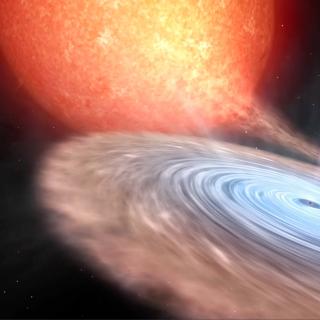Cseh, D.; Kaaret, P.; Corbel, S.; Grisé, F.; Lang, C.; Körding, E.; Falcke, H.; Jonker, P. G.; Miller-Jones, J. C. A.; Farrell, S.; Yang, Y. J.; Paragi, Z.; Frey, S.
Bibliographical reference
Monthly Notices of the Royal Astronomical Society: Letters, Volume 439, Issue 1, p.L1-L5
Advertised on:
3
2014
Citations
56
Refereed citations
52
Description
We report on the discovery of an apparent triple radio structure hidden
inside the radio bubble of the ultraluminous X-ray source Holmberg II
X-1. The morphology is consistent with a collimated jet structure, which
is observed to emit optically thin synchrotron radiation. The central
component has a steep radio spectrum and is brighter than the outer
components indicating a renewed radio activity. We estimate a minimum
time-averaged jet power of ˜2 × 1039 erg
s-1 that is associated with a time-averaged isotropic X-ray
luminosity of at least 4 × 1039 erg s-1. Our
results suggest that Holmberg II X-1 is powered by a black hole of
MBH ≥ 25 M⊙, that is inferred to be
accreting at a high Eddington rate with intermittent radio activity.
Related projects

Black holes, neutron stars, white dwarfs and their local environment
Accreting black-holes and neutron stars in X-ray binaries provide an ideal laboratory for exploring the physics of compact objects, yielding not only confirmation of the existence of stellar mass black holes via dynamical mass measurements, but also the best opportunity for probing high-gravity environments and the physics of accretion; the most
Montserrat
Armas Padilla